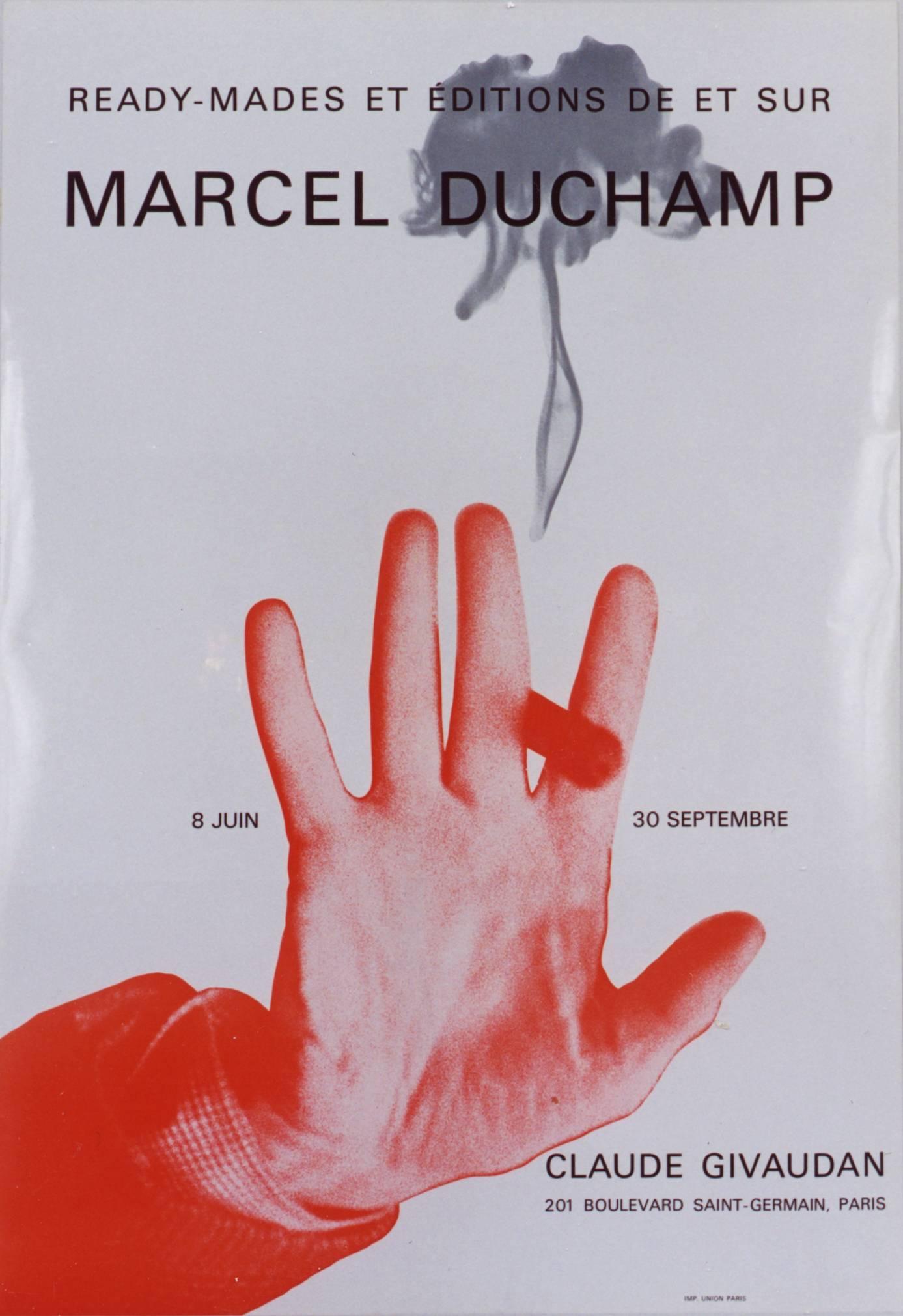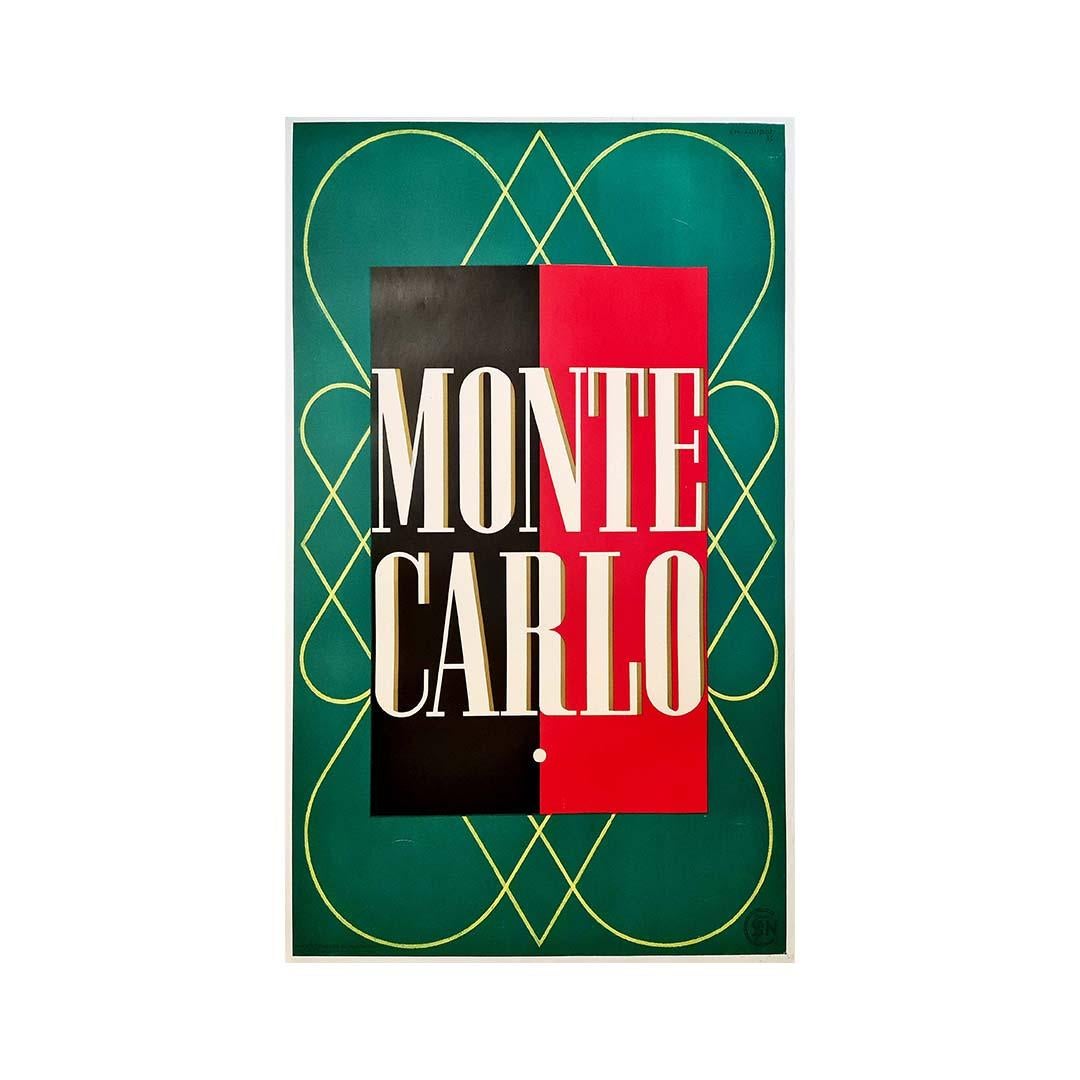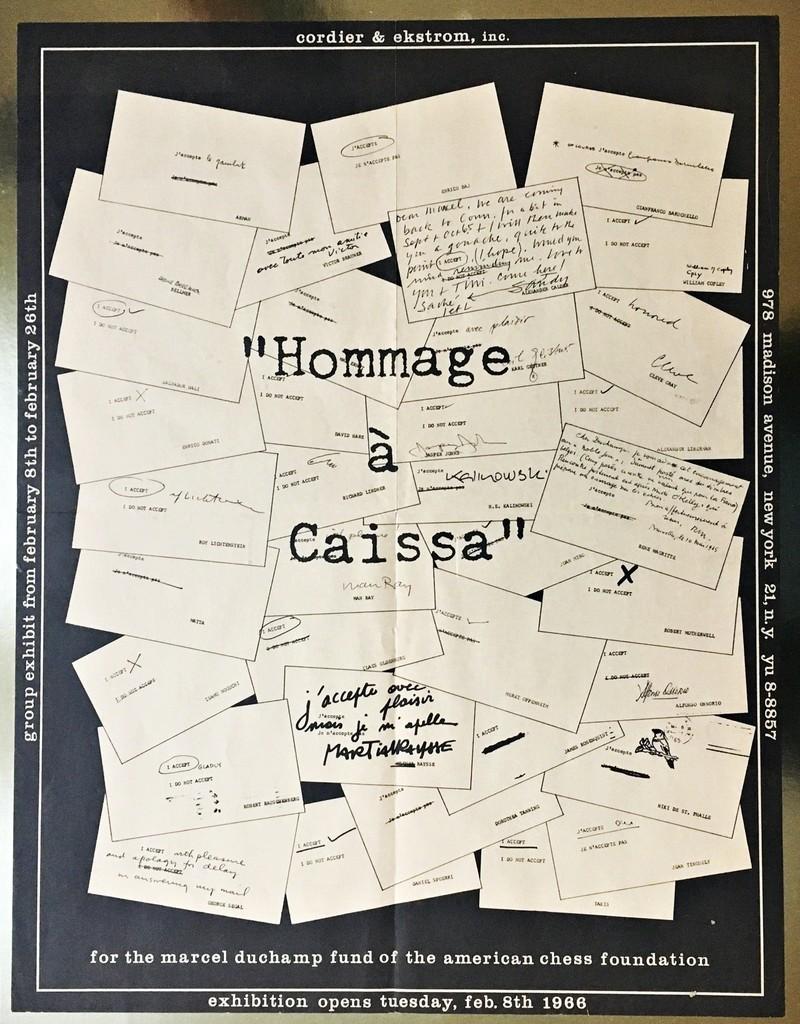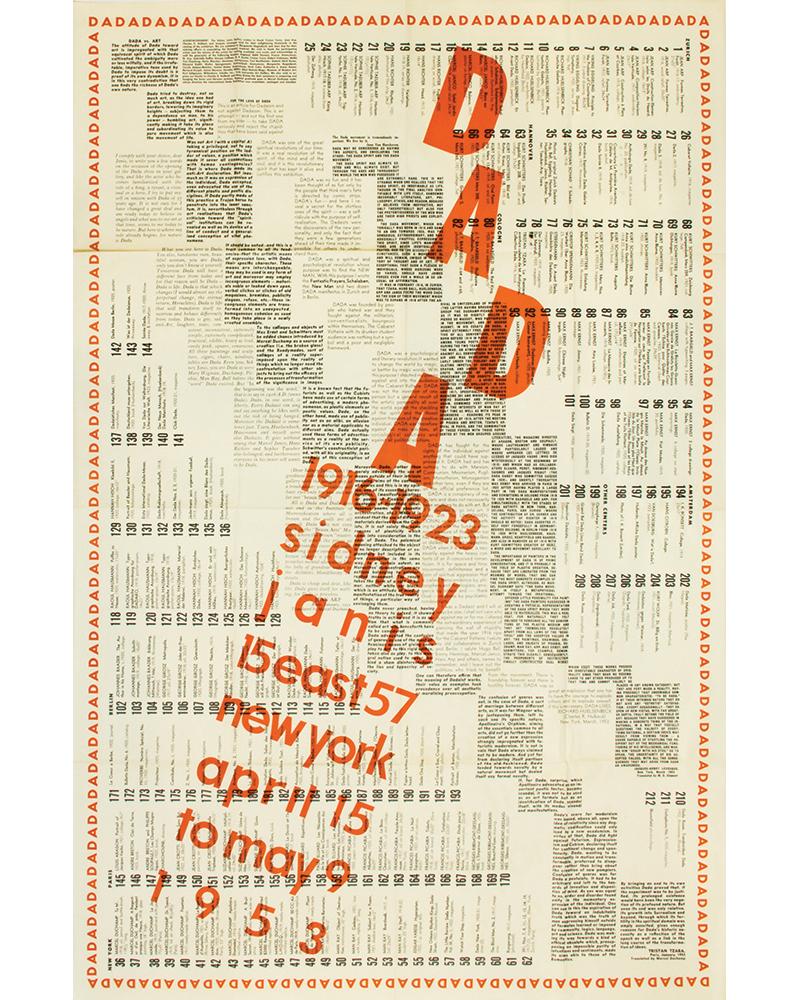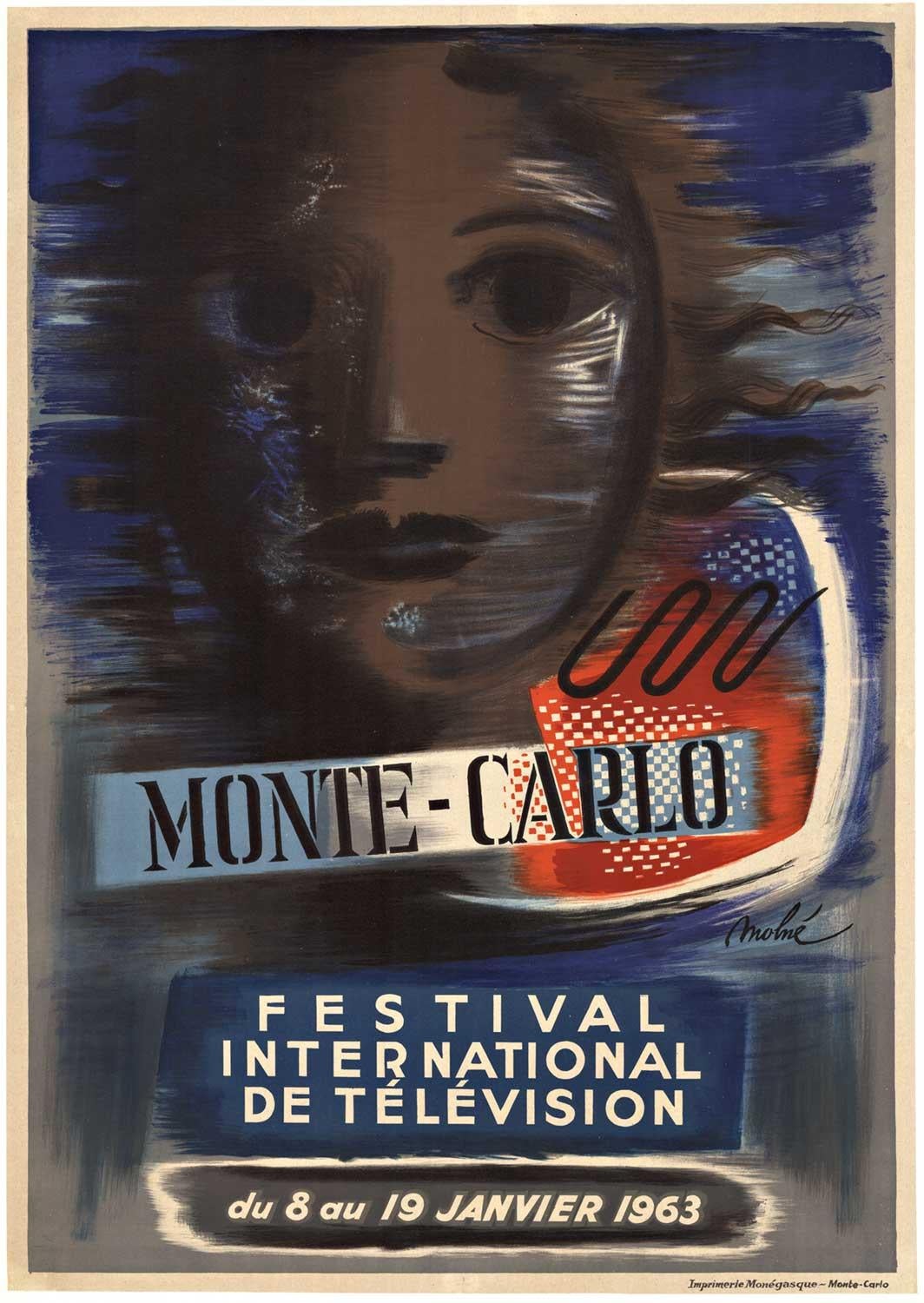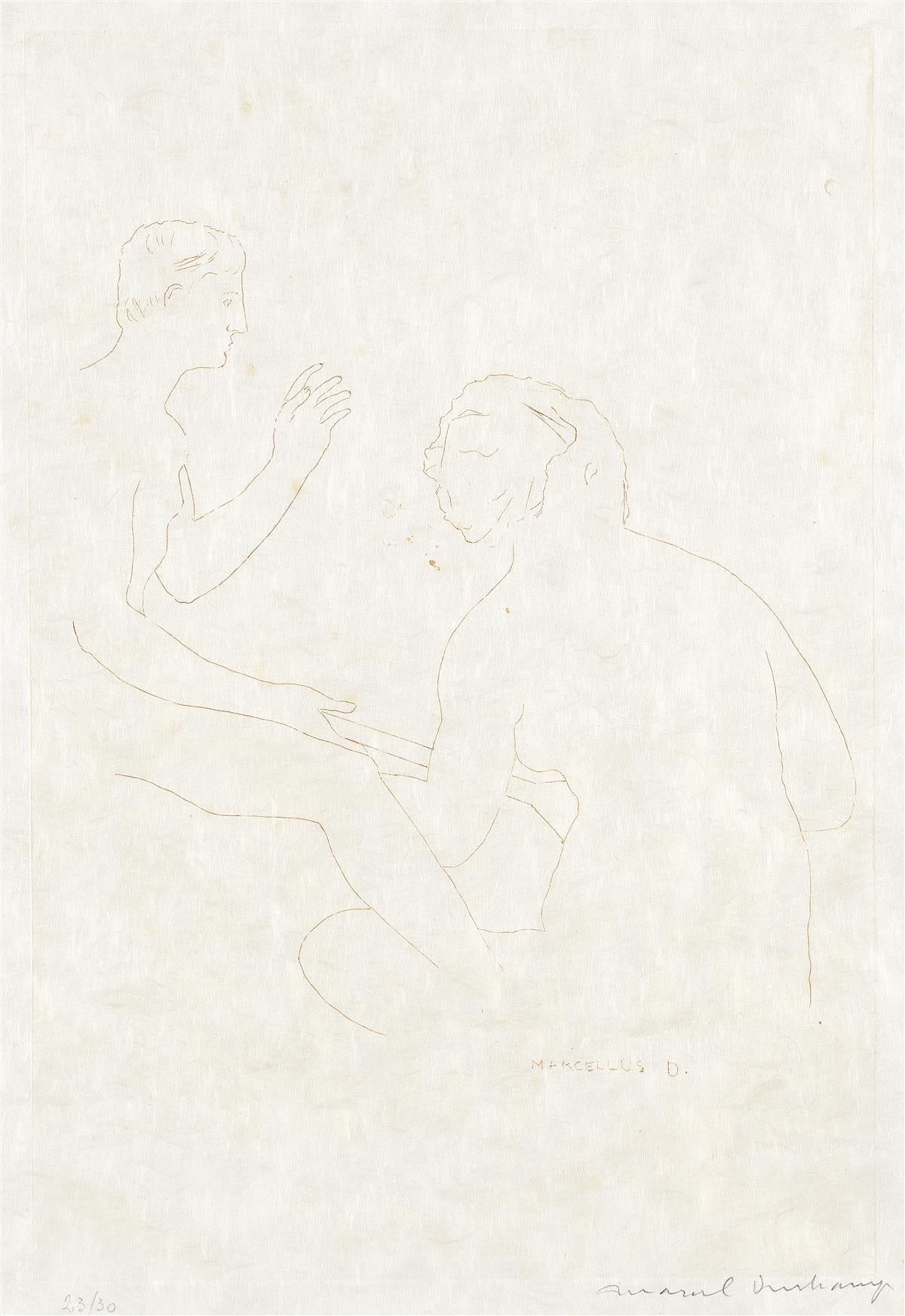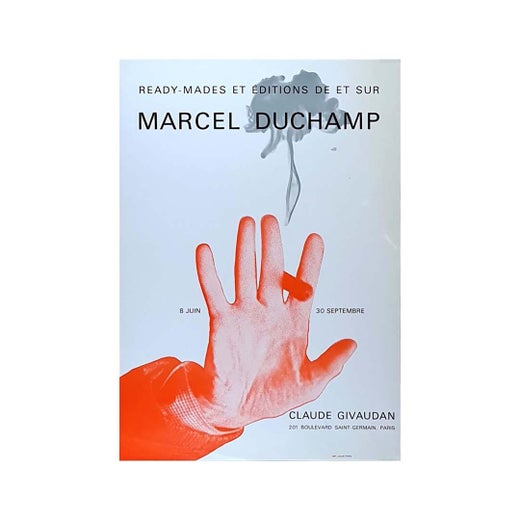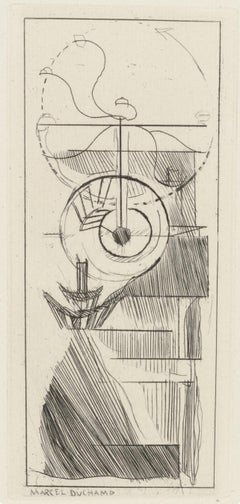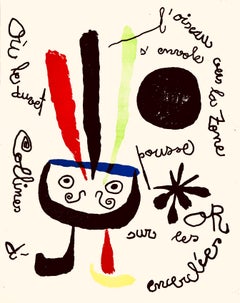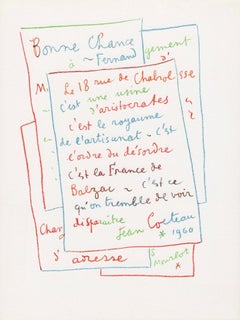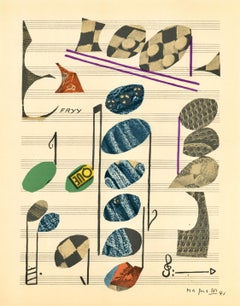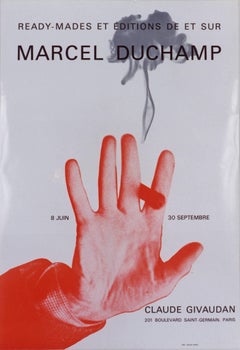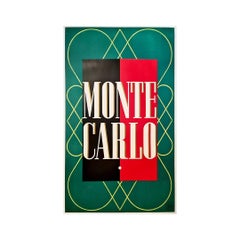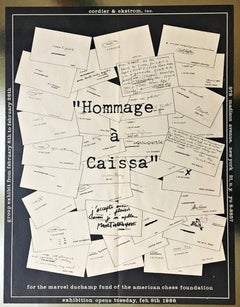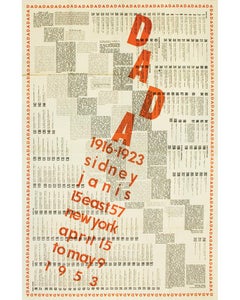Lithograph on vélin paper. Paper Size: 12.4 x 9.65 inches. Inscription: Signed in the plate and unnumbered, as issued. Catalogue raisonné references: Schwarz, Arturo. The Complete Works of Marcel Duchamp. Harry N. Abrams, 1969, illustration 406. Notes: From the album, XXe siècle, Chroniques du jour, 13 rue Valette (5e), Directeur G. di San Lazzaro, Sommaire du n°4, Nóel, 1938. Published and printed by Gualtieri di San Lazzaro, éditeur, Paris, in collaboration with Société Internationale d'Art XXe siècle, Paris, 1938. Background information: The Monte Carlo Bonds were a 1924 Marcel Duchamp work in the form of legal documents, created as bonds, originally intended to be produced in editions of 30. The creation of the work came out of Duchamp's repeated experiments at the Monte Carlo Casino, where he endlessly threw the dice in order to accumulate profit through an excruciatingly gradual process.Duchamp first devised of the Monte Carlo Bonds at the Monte Carlo Casino after engaging with a system of his own that wagered in roulette, involving compulsive throwing of the dice in order to gain profit despite the process being excruciatingly slow. At one point, he increased the amount of money that was being wagered, leading to the eventual creation of the Bonds as profit-sealing legal documents that were still equally works of conceptual art that mockingly took advantage of both finance and gambling. They were intended to procure investors, but only the numbered versions of the Bonds entitled their owners to collect shares in the dividends of his company. The bonds prominently feature a photocollage portrait of Duchamp by Man Ray, with soapy hair shaped to resemble devilish horns. In the background, the phrase "moustiques domestiques demi-stock" (domestic mosquitoes half-stock) is looped in small green print. Excerpted from the verso of the artwork (translated from French), Extract from the Articles of Association, Art. 1er. - The purpose of the Company is: 1° The exploitation of the Roulette of Monte-Carlo in the following conditions; 2° The exploitation of the Thirty and forty and other mines on the Côte d'Azur on the deliberation of the Board of Directors; Art. 2. - The annual yield is based on an upstream system, proven on one hundred thousand balls, the exclusive property of the Board of Directors. The application of the system to simple chances allows a dividend of 20% to be served; Art. 3. - The Company may, on deliberation of the General Meeting, repay all or part of the obligations no more than one month after the date of the decision; Art. 4. - The payment of coupons will take place on March 1 of each year or every six months, at the discretion of the shareholders. Additional notes: Excerpted from the academic article, “Promoting Original Prints, The Role of Gualtieri di San Lazzaro and XXe Siècle” by Valerie Holman, published in Print Quarterly, XXXIII, 2016, 2, Until recently very little has been written on the Italian author and art publisher Gualtieri di San Lazzaro (1904-75), yet for 50 years he chronicled the life and work of contemporary artists, produced monographs of exceptional quality, and disseminated original prints by modern painters and sculptors through his best-known periodical, XXe Siècle. Although still a relatively unfamiliar figure in the United Kingdom, San Lazzaro is one of the half-dozen great art publishers of the mid-twentieth century who, together with his exemplar, Ambroise Vollard (1866-1939), and those of his own generation, Christian Zervos (1889-1970), Tériade (1889-1983) and Albert Skira (1904-73), chose to base himself in Paris, seeing it throughout his life as the centre of the art world….XXe Siècle, an illustrated periodical, was launched in 1938 and printed in editions of approximately 2,000, each issue containing both photographs and four-colour separation reproductions across a wide spectrum of visual imagery ranging from masterpieces of Western painting to popular prints from the Far East. Its large format, lively design, and close integration of text and image, were immediately striking, but its most innovative feature, introduced at the suggestion of Hans Arp (1886-1966), was the inclusion of original prints by contemporary artists in every issue. With obvious appeal for collectors, XXe Siècle was also designed to introduce a wider, international public to contemporary painting and sculpture through good quality colour reproductions and the immediacy of original prints. Comparable in price to Cahiers d'Art, early issues of XXe Siècle sold out rapidly. While San Lazzaro's own aesthetic preferences tended towards lyric abstraction, he made clear that XXe Siècle was non-partisan [publication ceased during World War II]….in 1951, San Lazzaro relaunched XXe Siècle with thematic issues that were materials based, or centred on a topic of current interest in the visual arts, particularly in Europe: concepts of space, matter, monochrome, mark-making and the sign.' A defining feature of the new series was Italy's artistic dialogue with France for, while San Laz-zaro had originally concentrated on Paris-based painters and sculptors, his aim was to create an international network, to make known the work of French artists in Italy and Italian artists in France, and subsequently extend this bilateral axis to the English-speak-ing world. The artists represented in No. I by an original print were all best known as sculptors: Arp, Laurens, Henry Moore (1898-186) and Marino Marini, San Lazzaro not only sought to show readers the full range of an artist's work, but to encourage the production of prints, a stimulus much appreciated, for example, by Magnelli…. Suffering from failing health, in 1968 San Lazzaro lost overall control of XXe Siècle to Léon Amiel, a printer-publisher who had provided financial backing and helped with distribution in America." Thematic issues now ceased and were replaced by a 'panorama' of the year, but San Lazzaro was still active as a publisher of books and albums of prints….Shortly after his death, San Lazzaro himself was the subject of two exhibitions: 'Omaggio a XXe Siècle' in Milan in December 1974 centred on graphic work by those artists closest to him late in life, while 'San Laz-zaro et ses Amis' at the Musée d'Art Moderne de la Ville de Paris in 1975 featured work by all those whose work he had promoted for more than 50 years: Arp, Calder (1898-1976), Capogrossi, Chagall, Sonia Delau-nay, Dubuffet, Estève, Lucio Fontana (1899-1968), Gili-oli (1911-77), Magnelli, Marini, Miró, Moore and Poliakoff. This exhibition was seen by one of his closest colleagues as an indirect portrait of San Lazzaro, a complex man whose modesty and reserve masked his unremitting drive to extend international appreciation of contemporary art, and to bring the reading public closer to its making through the medium of print.
MARCEL DUCHAMP (1887-1968) was a French painter, sculptor, chess player, and writer whose work is associated with Cubism, Dada, Futurism and conceptual art. He is commonly regarded, along with Pablo Picasso and Henri Matisse, as one of the three artists who helped to define the revolutionary developments in the plastic arts in the opening decades of the 20th century, responsible for significant developments in painting and sculpture. He has had an immense impact on 20th- and 21st-century art, and a seminal influence on the development of conceptual art. By the time of World War I, he had rejected the work of many of his fellow artists (such as Henri Matisse) as "retinal," intended only to please the eye. Instead, he wanted to use art to serve the mind. Duchamp is remembered as a pioneering figure partly because of the two famous scandals he provoked -- his Nude Descending a Staircase that was the most talked-about work of the landmark 1913 Armory Show -- and his Fountain, a signed urinal displayed in the 1917 Society of Independent Artists exhibition that nearly single-handedly launched the New York Dada movement and led the entire New York art world to ponder the question of "What is art?" In 2009, Marcel Duchamp’s artwork, Belle Haleine, Eau de Voilette, sold for $11,360,067 USD at Christie's, setting a world record for the artist.
